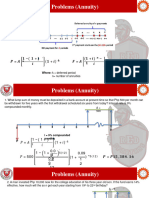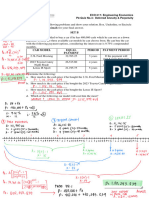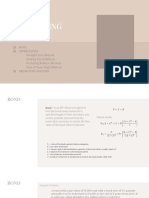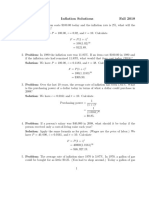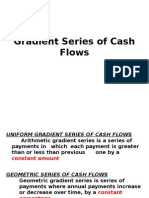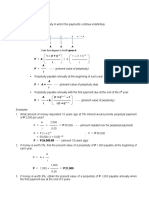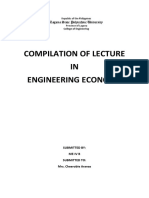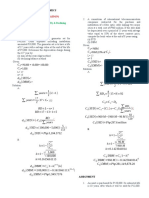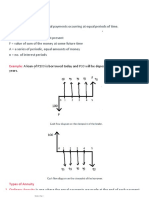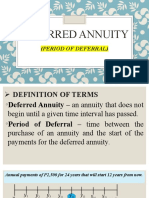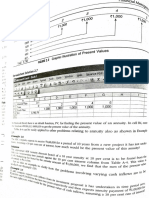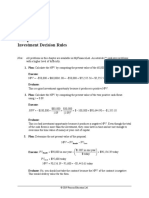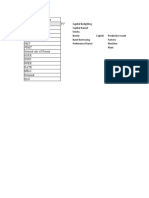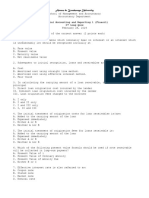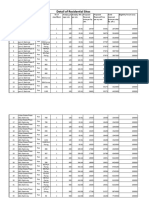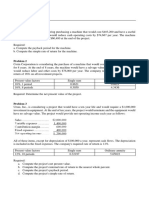100% found this document useful (3 votes)
6K views3 pagesAnnuity Calculations for Investors
The document contains two sample problems solving for present values of annuities using the annuity formula. The first problem solves for the value R of an annuity of R pesos payable annually for eight years with the first payment in 10 years, given the present value is P187,481.25 and the interest rate is 5%. The second problem solves for the lump sum P that would need to be deposited now at 5% interest to withdraw P20,000 at ages 18, 19, 20, and 21 of a newborn child.
Uploaded by
Chelsiemea VargasCopyright
© © All Rights Reserved
We take content rights seriously. If you suspect this is your content, claim it here.
Available Formats
Download as PDF, TXT or read online on Scribd
100% found this document useful (3 votes)
6K views3 pagesAnnuity Calculations for Investors
The document contains two sample problems solving for present values of annuities using the annuity formula. The first problem solves for the value R of an annuity of R pesos payable annually for eight years with the first payment in 10 years, given the present value is P187,481.25 and the interest rate is 5%. The second problem solves for the lump sum P that would need to be deposited now at 5% interest to withdraw P20,000 at ages 18, 19, 20, and 21 of a newborn child.
Uploaded by
Chelsiemea VargasCopyright
© © All Rights Reserved
We take content rights seriously. If you suspect this is your content, claim it here.
Available Formats
Download as PDF, TXT or read online on Scribd
/ 3























